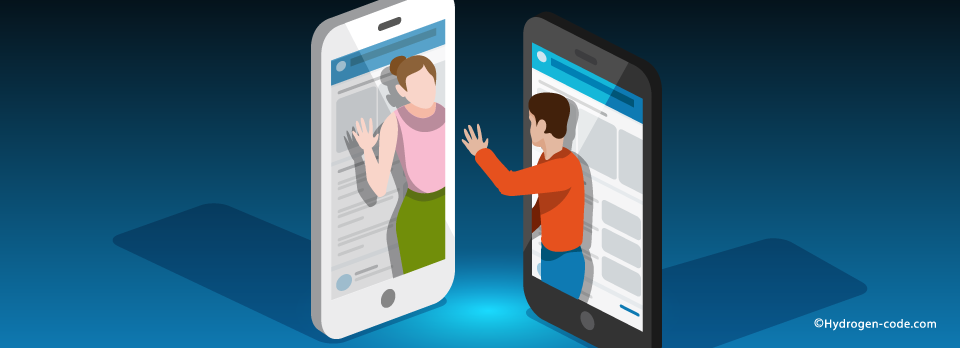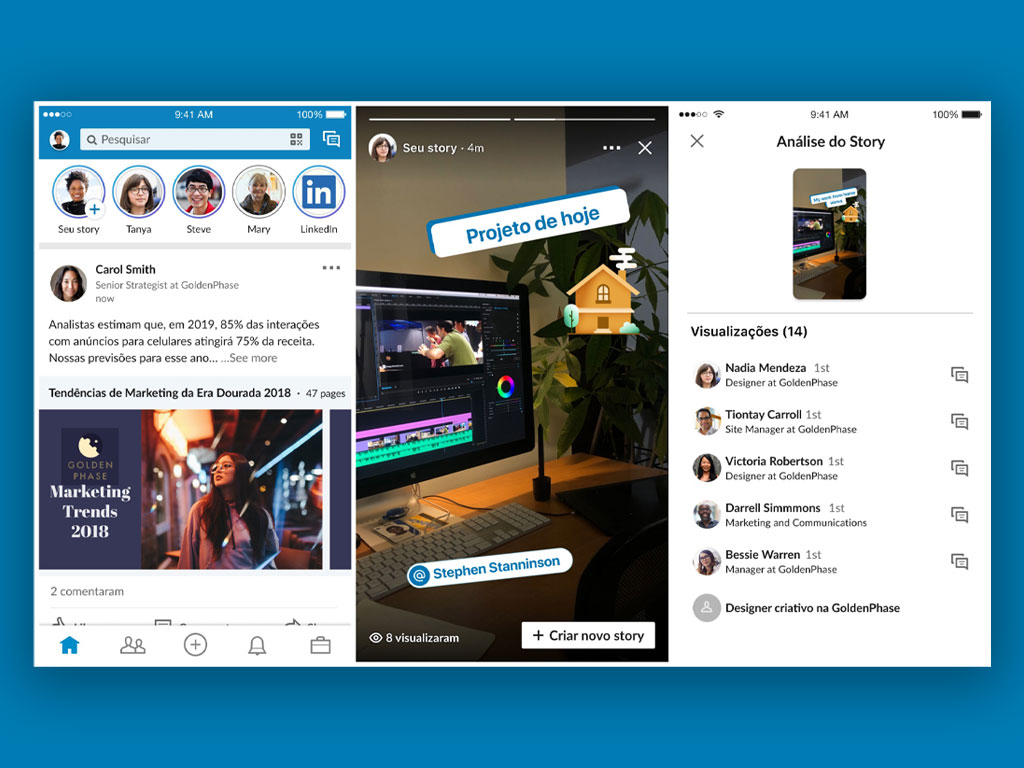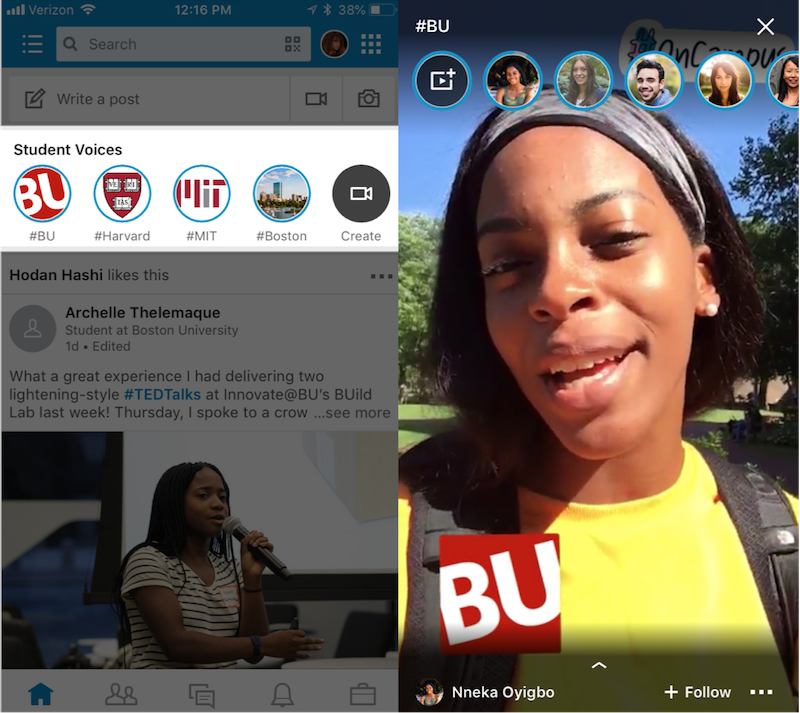
We assume communication is the basis of human relationships. Without realizing it, we always develop new and effective communication methods. And more or less unconsciously, we innovate our languages to make ourselves understood by an ever wider audience.
Just as, without realizing it, Linkedin has expanded its communication skills by introducing the novelty of Linkedin Stories.
Already active for a few months, they still have a small range and seem very few users use them.

Last February, Pete Davies, Senior Director of Product Management at Linkedin, announced the arrival of the stories with a post.
The announcement did not cause much fanfare, with less than 800 likes and 290 comments. Considering that the post went around the world to launch a structural novelty of great importance.
In short, well but not very well.
After a first test phase started in the spring in Brazil, the functionality has also been available in the BelPaese for a few weeks. However, the users who use it are still few.
The news has recently begun to circulate and, perhaps it will take some time for the use of stories to take hold on a large scale. Even Wired Italia preferred to remain silent on too hasty judgments regarding the usefulness and future of this service.
How does it work?
Unlike Facebook and Instagram, the service can only be accessed from a mobile phone. For now, the desktop doesn’t give you the ability to watch or post stories.
The features of Linkedin Stories are very similar to those of Instagram. Just a little more “banded” perhaps to give the contents a more professional and less amusing aura.
In fact, for the moment, we cannot:
• link to “explore pages” or “discover more”
• insert hashtags
• Search for stickers or music
The only activities allowed are:
• post photos or videos of up to 20 seconds
• mention other users
• start polls
The reasons for the launch are mainly two and were given by Davies himself in the post.
First of all, there is a need to involve the new generations and to communicate with them. Let’s not forget that Linkedin is a business platform used largely by recruiters and candidates. The Company felt the need to adapt to those groups of young people looking for work. The simplest idea seemed to be to insert a quick and easy to get method like the stories to make it easier for millennials to access the platform.
Secondly, continues Davies, there was a perceived need to renew the communication of professionals within the social network. In fact, he was curious as to how creativity will involve users in telling their professional life stories.
We ask ourselves too. We’ll see.
“Linkedin stories” is new, for the platform, not for the users. All social users are familiar with the language and Instagram/Facebook stories. Like everything new, in this case, there are doubts but also positivity to be grasped. We have identified three elements that could turn into real opportunities if exploited in the right way.
START POLL: one of the few activities allowed within the platform is to launch surveys. It would seem an opportunity to be seized, especially in this period, where stress levels can be high and social distances require not to meet in person. Probing the sentiment of users or employees of your company with a survey could be a good way to see how things are going, ask for opinions and opinions, try to understand what can be better. In short, it could help to start an empathic process between professionals and companies.
ELEVATOR PITCH: even in the business world it is now important to present your ideas clearly and concisely. Possibly also using a creative language, in order to increase the attention of the listener. The idea of doing it on a platform like Linkedin, with a short history of fifteen seconds, could appeal to many enterprising entrepreneurs, capturing the attention of future customers and/or investors.
BUILD YOUR TRUST: in addition to the presentation of projects, this tool can offer the opportunity to present your business in a clear and limpid way. Here the opportunity arises to build a relationship of trust with its investors and users, through short stories on “Who we are and what we do”. Here, too, the story can become creative and enjoyable. Telling your business the “truth” is the best way to become trustworthy.
There are not yet any in Italian, but coach videos offering advice on how to expand your business thanks to the new Linkedin feature are becoming popular abroad.
Like any new project, the Linkedin Stories adventure also needs some time to get ahead. Will it work? Such as?
Back in 2018 Linkedin had launched a stories service called “Student voices”. A platform dedicated to university students. The same features but reserved for a limited target. Students were given the opportunity to share photos and videos to discuss issues related to their life on university campuses, with the aim of starting to get noticed by company recruiters. The experiment proved to be a total failure and the functionality was withdrawn after a few months.

The platform has certainly started an evolution process that is slowly leading it to look more and more like a mass social network. First with the introduction of hashtags in 2018, reactions in 2019, and today with stories.
It almost seems that our society is so addicted to the use of social media that every sphere of our online communication is now set up on the Facebook / Linkedin system.
If on the one hand, we try to preserve the professional sphere of the platform, with a more formal language, dealing with business issues, on the other hand, we ask users to become micro-influencers trying to make the most of their creativity. This also applies to professional fields where creativity is not necessarily required.
Consequently, there is a high risk of starting to see stories that are increasingly distant from the professional sphere and closer to the private and entertainment sphere, exactly as happens on other social networks.
If the stories have a future, in some way professional, it will be the users who will determine it, as always happens.
We are curious to understand what will be the most posted content.
In short, will Linkedin change permanently? Will it become an entertainment platform?
We rely on the instinct of the users.
At the end of the day, even Tinder was originally born to meet a soul mate … ça va sans dire.